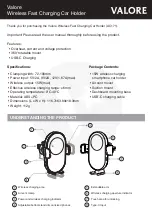
ZXG10-OB06 (V1.0) Integrated Outdoor GSM Base Station Technical Manual
82
Confidential and Proprietary Information of ZTE CORPORATION
intermediate links along the path, the reliability of transmission is higher.
This networking mode is deployed in urban areas with the dense
population.
Chain Networking Mode
Figure 67 shows the chain networking mode of the ZXG10 OB06 (V1.0).
Each line denotes a bi-directional E1 connection. However, design of the
actual related ID DIP switches at the BS side, should be according to the
relative configurations.
F
I G U R E
6 7
–
C
H A I N
N
E T W O R K I N G
S
C H E M A T I C
D
I A G R A M
SITE0
BSC
SITE1
SITE2
Chain networking is also applicable to the one-site multi-OB06 situation.
Since signals go through more links, the line reliability is relatively poor.
This networking mode is applicable to stripe-like areas with a small
population, thus saving a large number of transmission devices. To
prevent the clock performance drop, it is recommended, not to cascade
more than four OB06s in the chain networking mode.
Tree Networking Mode
The tree networking mode of the ZXG10 OB06 (V1.0) is shown in Figure
68. Each line denotes a bi-directional E1 connection. However, the design
of the actual related ID DIP switches at the BS side should be according to
the relative configurations.
F
I G U R E
6 8
–
T
R E E
N
E T W O R K I N G
S
C H E M A T I C
D
I A G R A M
.
.
.
BSC
SITE0
SITE1
SITE2
SITEn
This mode is complicated, in which signals have to pass many nodes and
the line reliability is relatively low. The fault from the upper-level site may
affect the proper running of the lower-level site. In the tree networking
mode, the OB06 connected with BSC is the central node, which may
branch into three nodes. The tree networking mode is deployed in large
areas but with less population.
















































